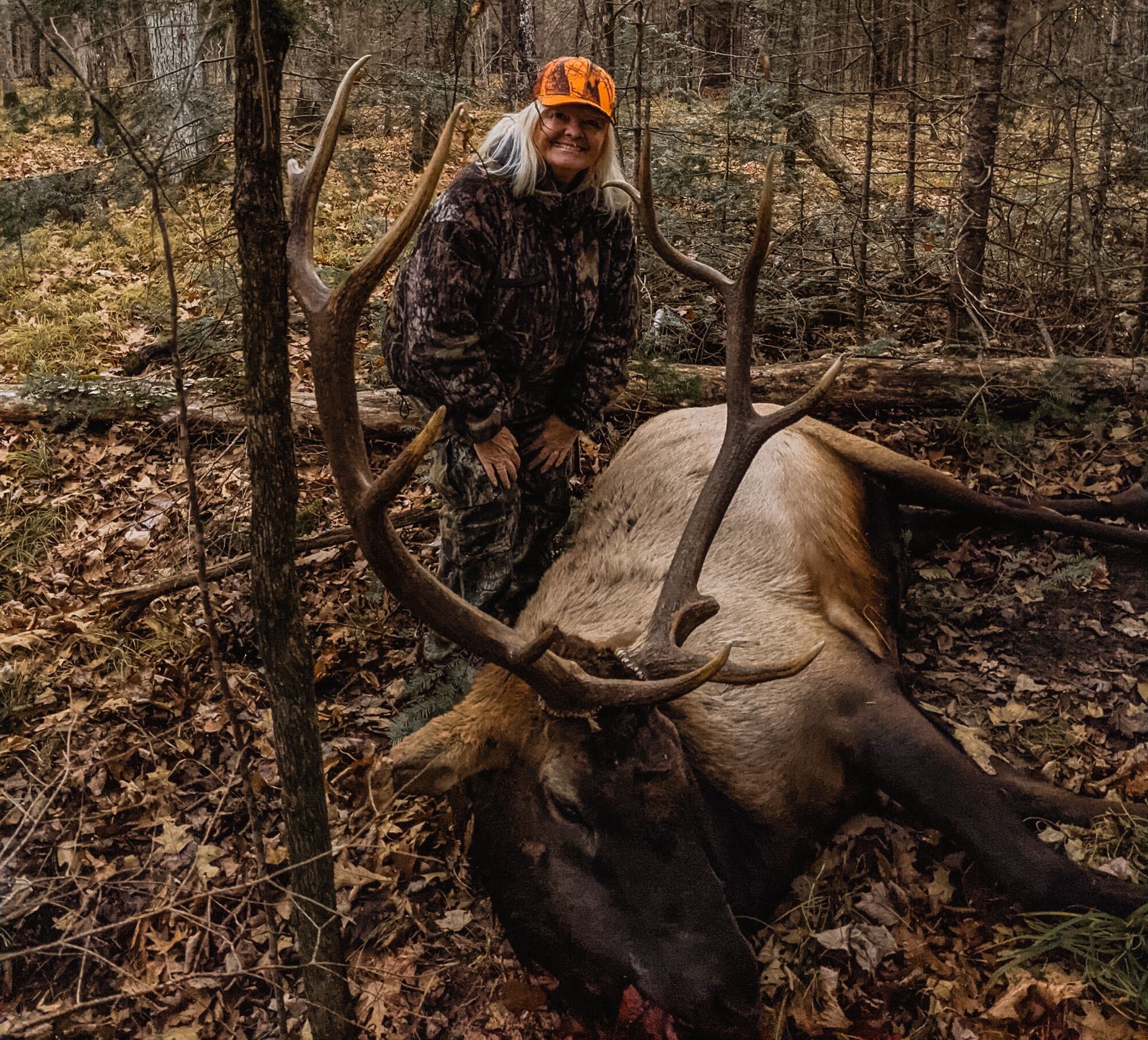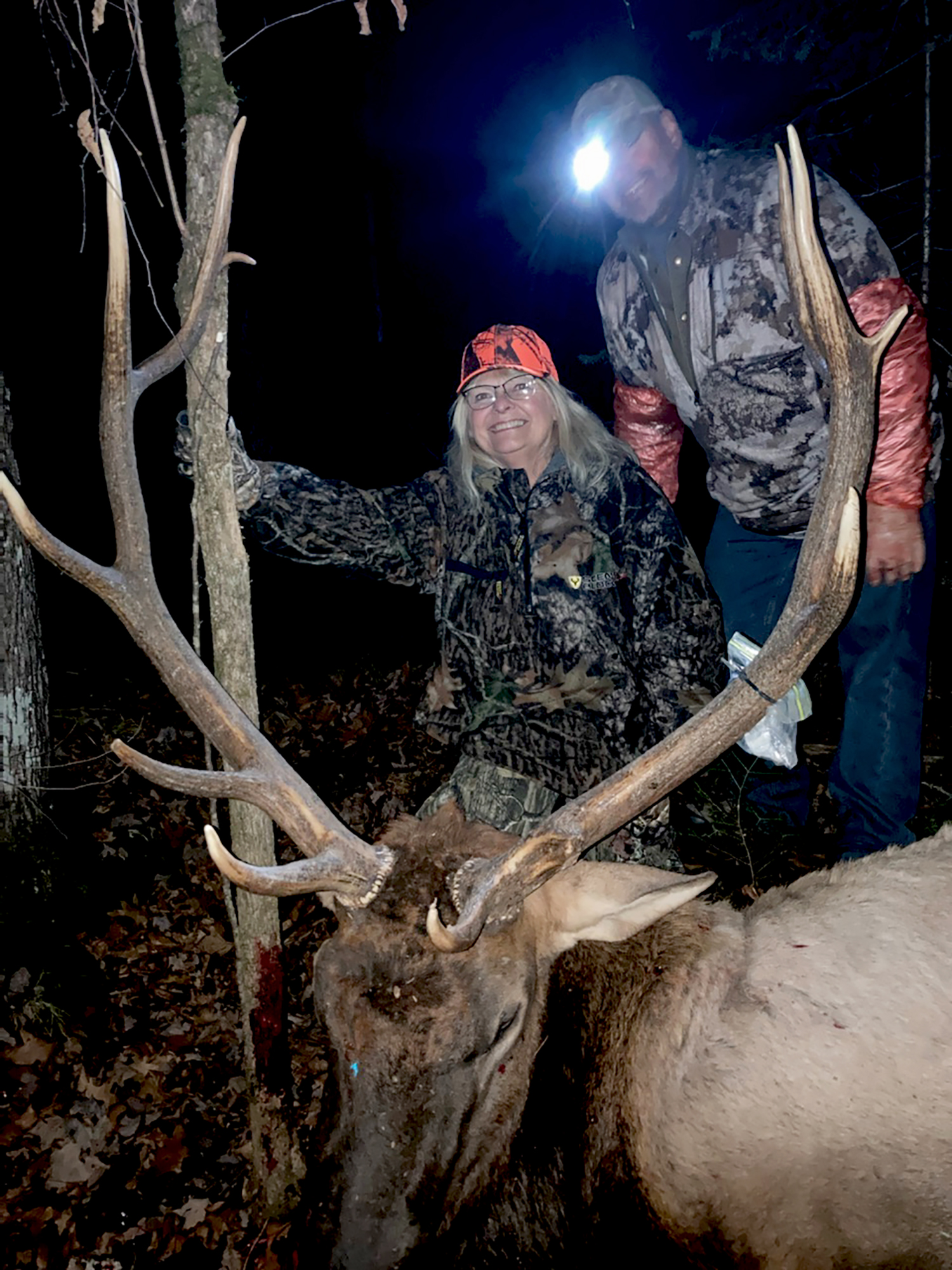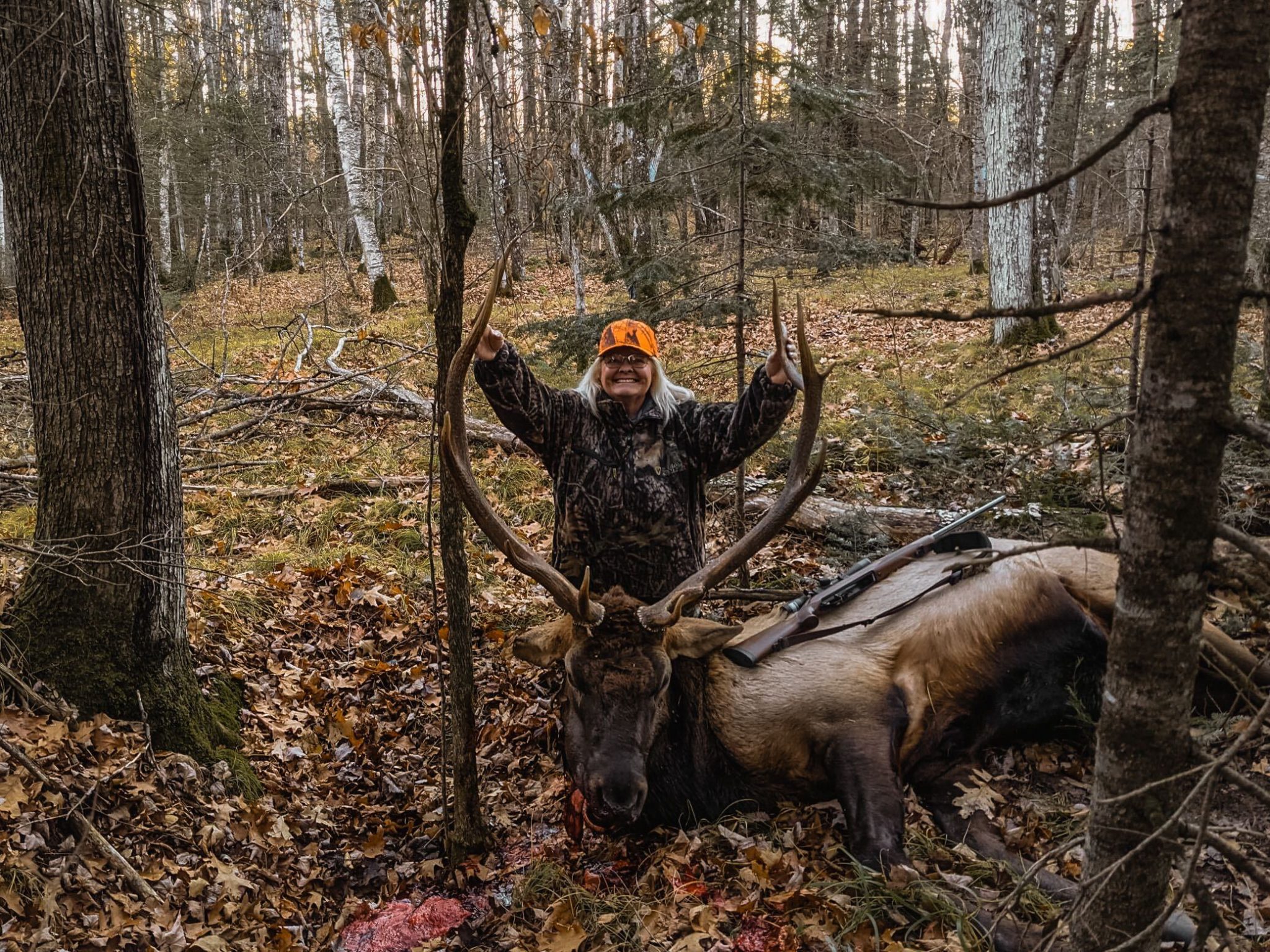The Wisconsin Department of Natural Resources recently wrapped up its fourth annual lottery elk hunt, which proved to be a rousing overall success; nearly every hunter who drew a tag killed an elk during the 2021-2022 limited hunting season.
Since the state’s first modern elk season debuted in 2018, the department has annually awarded a total of eight elk tags: four to resident hunters and four to Ojibwe tribal members in the Ceded Territory. The recipients of three regular tags are drawn via the lottery, while the fourth regular tag is donated to the state chapter of the Rocky Mountain Elk Foundation (RMEF) to raffle off.
Of the eight total tags issued for this past season, seven were filled. The general lottery drew more than 25,000 entrants, while the RMEF raffle attracted 1,800 participants.
“I looked through the scope and saw a huge bull bedded next to the woods. I couldn’t believe it. All our hard work was paying off.”
“A lot of work has gone into restoring elk, a native species driven to extinction during the settlement era,” said Michael J Isham Jr., executive administrator of the Great Lakes Indian Fish & Wildlife Commission. “A healthy elk population, pre-hunt ceremonies, harvest opportunities — it all helps bring balance to the environment and solidifies our connection to the natural world.”
Three of the four hunters who drew DNR elk tags were successful in taking a bull elk, according to the Duluth News Tribune.
“All four hunters had multiple opportunities to harvest bull elk across the Clam Lake Elk Range,” said DNR wildlife biologist Josh Spiegel in a press release. “Holding a once-in-a-lifetime tag, all four individuals had great hunting experiences and pursuits that were, like many hunts, filled with ups and downs. The 2021 elk hunters worked hard, putting in a lot of hours in the field looking for signs, identifying key feeding areas, and planning their hunt. Scouting and hunting an animal that moves long distances daily can be difficult.”

All four Ojibwe tribal hunters who secured elk tags were also successful.
The lucky RMEF raffle winner was among the successful three hunters with regular tags. Mary Daul is a longtime member of her local chapter and the second female hunter to draw a tag for Wisconsin elk.
The 65-year-old resident of Freedom, Wisconsin, is what many call an adult-onset hunter. And while she already knew she was a good shot, this was her first actual hunting experience. She also never thought she’d win the RMEF raffle.
Daul first unveiled her bull on Facebook, calling her inaugural hunt with her husband, Larry, a “once in a lifetime experience.” She killed her massive 6 x 7 trophy on Nov. 1 at 4:30 p.m.
“We scouted for six days before the hunt and hunted for 12 days — 7 or 8 hours a day, doing 40 to 50 miles a day in our truck,” the great-grandmother told Free Range American.
“I passed up four spikes and had a chance at a 3 x 3 and a 4 x 4,” Daul said. “On the 12th day, after a long day of hunting, we were debating about going back to the cabin, but my husband suggested we try [one more stretch of road].”
It turned out to be the right move.

“[Larry] started whispering in a shaky voice, ‘There is a big one, honey!’ I couldn’t see it,” she said. “He pulled the truck over and set up the tripod and my gun. I looked through the scope and saw a huge bull bedded next to the woods. I couldn’t believe it. All our hard work was paying off.”
“I knew I was a good shot,” Daul added, “but I also knew I couldn’t miss this one. So, I quickly said a prayer to God for a clean kill and pulled the trigger.” Her shot was true.
“I turned around and was jumping up and down and hugging my husband,” she said. “He was so happy and lovingly said, ‘I wasn’t done giving you instructions!’”
But Daul’s bull wasn’t quite done. He got up from where he’d been shot and walked into the treeline but didn’t get far. “We ran the 150 yards to where I shot it and started following the blood. It was about 40 yards from the clearing.”
Since that November day and Mary’s hunt of a lifetime, she and Larry have put their meat haul to good use by getting creative in the kitchen.
As with other managed elk populations, Wisconsin’s herd is healthy and now stands at about 445 animals. At one time, elk were nearly extirpated in Wisconsin. In 1995, reintroduction efforts began when 25 elk were brought into the state. More have been reintroduced since efforts resumed in 2015, according to the state Department of Natural Resources. As a result, the species has made an impressive comeback.
The Clam Lake elk herd was bolstered by 91 elk gradually relocated from Kentucky from 2017 to 2019. That herd has grown to an estimated 330 animals today. From 2015 to 2016, 73 elk were released in the Black River Elk Range (252 square miles), which now boasts a population of about 115 animals.
Due to the success of the reintroduction program and the past four hunts, the department has announced the 2022 Wisconsin elk hunt will proceed in the fall as planned.
The application window opens March 1 and closes May 31. The resident application fee is $10, of which $7 will go toward funding “elk management, habitat restoration and research” efforts in the Badger State. The state’s RMEF chapter will also receive another tag to raffle off to their membership.
To learn more about the 2022 hunt, visit Wisconsin’s DNR website.
READ NEXT – The Time Is Now: How to Apply and Draw Western Hunting Tags








Comments